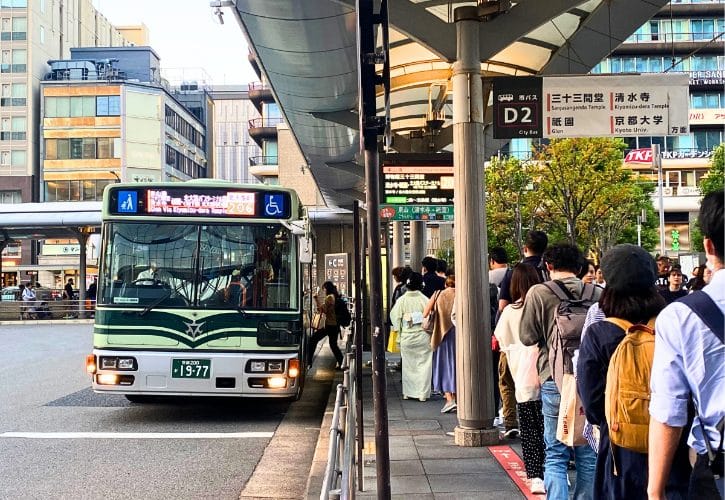
Planning a trip to Kyoto? The ancient capital is transforming in ways that make visiting easier and more exciting than ever.
From clever new ways to skip the crowds to an incredible gaming attraction that’ll bring out your inner child, there are 10 fresh changes you need to know about.
Here’s what you need to know before you go. 😊
1. Kyoto’s New Express Bus Aims to Reduce Overtourism
a. What is the New Express Bus Service

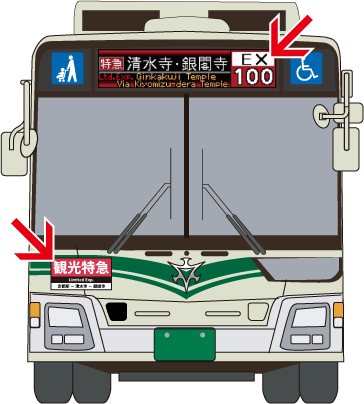
- Direct Access to Major Attractions: The express bus connects Kyoto Station directly to popular spots like Kiyomizu-dera Temple, Gion, and Ginkaku-ji Temple, saving you time and hassle.
- Peak Season Service: The bus runs on weekends, holidays, and busy periods like Obon and New Year when regular buses are most crowded.
- Two Route Options: EX100 stops at multiple attractions, while EX101 provides a direct route to Kiyomizu-dera Temple.
- Time-Saving Travel: The express bus reaches Ginkaku-ji in 30 minutes compared to 50 minutes on regular buses.
- Eco-Friendly Transport: The service helps reduce congestion on local buses, making travel better for both tourists and residents.
b. Why Should You Use the Express Bus
- Less Crowded Experience: The express bus offers a more comfortable ride compared to the typically packed regular buses.
- Faster Journey Times: The bus takes just 10 minutes to reach Kiyomizu-dera from Kyoto Station, compared to 15 minutes on regular buses.
- Convenient Stop Locations: Bus stops are positioned close to major attractions, minimizing walking distance.
- Multilingual Support: Announcements are made in Japanese, English, Korean, and Chinese for easy navigation.
c. How to Use the Express Bus

- Simple Boarding Process: Enter through the front door, pay at the driver’s seat, and exit through the middle door.
- Standard Fares: Adult tickets cost ¥500 and children’s tickets are ¥250, slightly higher than regular buses but offering more convenience.
- Multiple Payment Options: Pay with cash, IC cards (Suica/ICOCA), or use the Subway & Bus 1-Day Pass (¥1,100 adults, ¥550 children).
- Regular Schedule: Buses operate 16-24 times daily between 9:00 AM and 5:00 PM.
- Easy Identification: Look for buses marked with “観光特急 Limited Exp.”, “EX100”, or “EX101” on the front.
d. Key Stops and Attractions

- Kiyomizu-dera Temple: A UNESCO World Heritage Site known for its wooden stage and stunning views. The bus stops at Gojozaka, a short walk from the temple.
- Gion: Kyoto’s famous geisha district, filled with traditional tea houses and shops. The bus stops right in the heart of Gion
- Ginkaku-ji Temple (Silver Pavilion): A serene Zen temple surrounded by beautiful gardens. The bus stops at Ginkakuji-mae, just outside the temple.
- Heian Jingu Shrine: A large Shinto shrine with a colorful torii gate and peaceful gardens. The bus stops at Okazaki Koen Bijutsukan/Heian Jingu-mae.
- Yasaka Shrine: Located near Gion, this shrine is a popular spot for festivals and evening strolls.
e. Tips for First-Time Visitors
- Plan Ahead: Check the bus schedule online or at Kyoto Station to avoid long waits.
- Pass Value: The Subway & Bus 1-Day Pass offers great value when visiting multiple attractions.
- Early Start Advantage: Visit popular spots early in the day to avoid peak crowds and enjoy a more peaceful experience.
Read More: Kyoto Itinerary: Your Best 3 Days Travel Guide
2. Kyoto Lodging Tax Increase
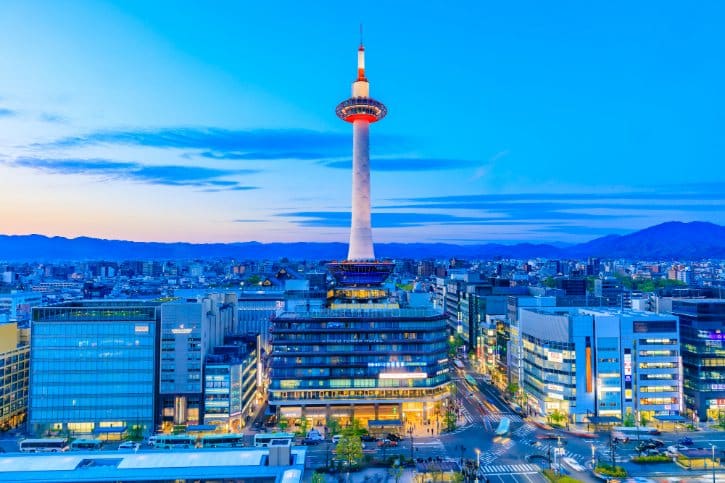
a. What Is the Kyoto Lodging Tax
- Definition: The lodging tax is a fee you pay when staying overnight in Kyoto. It’s added to your hotel or accommodation bill and varies based on the room price.
- Purpose: The tax helps fund tourism-related improvements, disaster preparedness, and measures to balance tourism with residents’ quality of life.
- Current Rates (Until 2026): Three-tier system charges 200 yen (rooms under ¥20,000), 500 yen (¥20,000-49,999), and 1,000 yen (¥50,000+).
- New System (From March 2026): Rates will increase substantially, reaching up to ¥10,000 per person per night.
b. How Much Will You Pay Under the New System
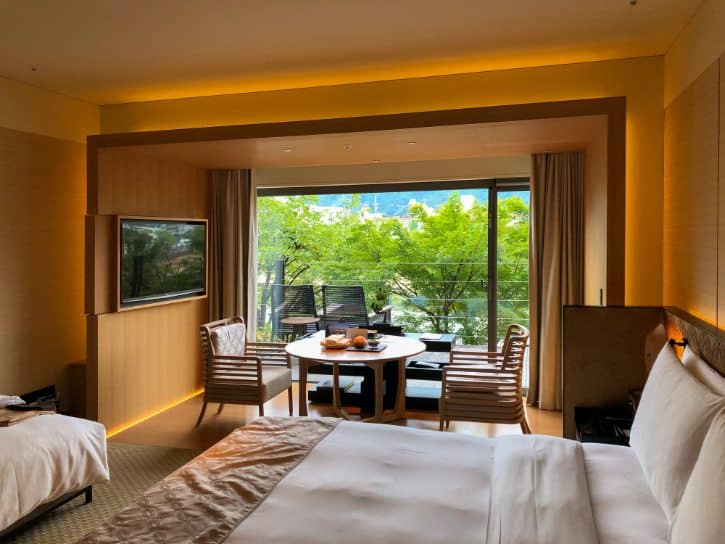
- Low-Cost Stays: For rooms under 6,000 yen per night, the tax remains 200 yen per person.
- Mid-Range Stays: For rooms priced 6,000–19,999 yen, the tax doubles to 400 yen per person.
- Higher-End Stays: For rooms costing 20,000–49,999 yen, the tax increases to 1,000 yen per person.
- Luxury Stays: For rooms priced 50,000–99,999 yen, the tax jumps to 4,000 yen per person.
- Top Tier: For rooms over 100,000 yen, the tax skyrockets to 10,000 yen per person, the highest in Japan.
c. How Will This Affect Your Trip
- Budget Impact: Higher-end accommodations will see significant tax increases, with luxury rooms adding 10,000 yen per person to your bill.
- Timing: The new tax takes effect in March 2026, so plan your trip before then if you want to avoid the hike.
Read More: Only 2 Best Places to Stay in Kyoto
3. Restricted Access in Gion District
a. Why Are There Restrictions in Gion
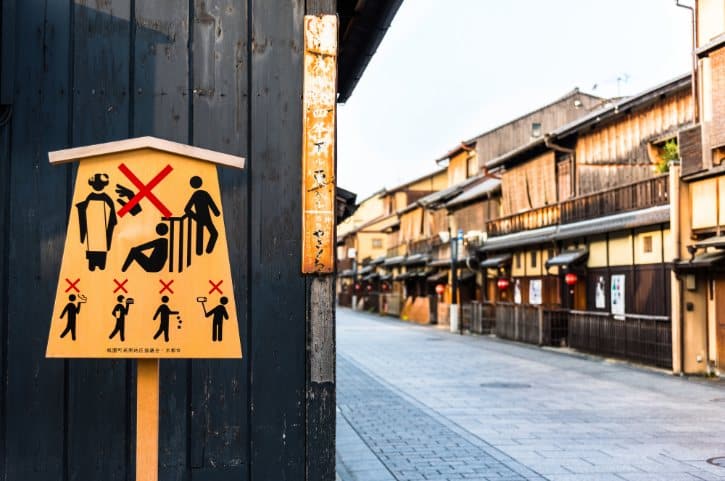
- Overtourism Issues: The district faces issues with tourist overcrowding and inappropriate behavior, including harassment of geisha and maiko for photos.
- Resident Concerns: Residents emphasize that Gion is their living neighborhood, not a tourist attraction, citing incidents of harassment and property damage.
- Cultural Preservation: The rules protect geisha and maiko’s privacy and safety while maintaining the district’s authentic atmosphere.
b. What Areas Are Restricted
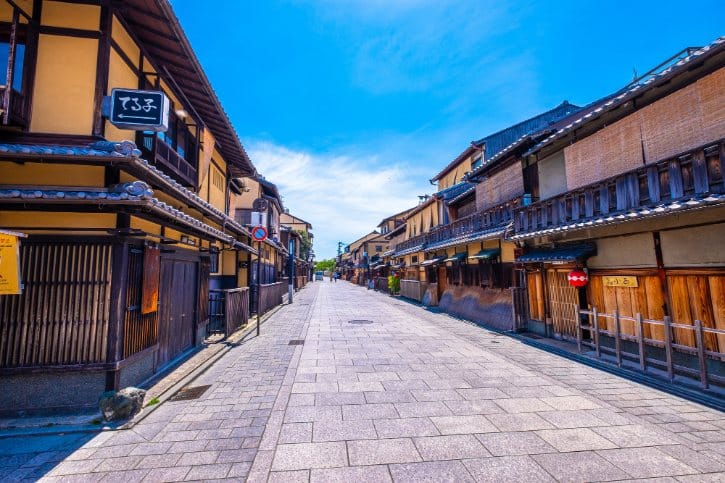
- Public Street Access: Main streets like Hanamikoji remain open for visitors to experience Gion’s atmosphere.
- Private Alley Access: Shidou (private alleys) are strictly off-limits to tourists, as they’re owned by local residents and businesses.
- Signage: Look for signs in Japanese, English, and Chinese that clearly mark private alleys. These signs warn against trespassing and photography.
c. What Are the Rules You Need to Follow

- No Trespassing: Do not enter private alleys, even if they look picturesque. Violators can be fined ¥10,000.
- Respectful Behavior: Avoid crowding or following geisha and maiko. They are professionals going about their work, not tourist attractions.
d. When Do These Restrictions Take Effect
- Effective Since April 2024: The ban on entering private alleys and stricter enforcement of rules began in April 2024.
- Ongoing Enforcement: The rules are actively enforced, especially during peak tourist seasons like cherry blossom (sakura) season.
e. Tips for Visiting Gion Respectfully

- Stay on Public Streets: Stick to main thoroughfares like Hanamikoji Street, where you can still enjoy the historic atmosphere.
- Be Mindful of Geisha and Maiko: If you see them, admire from a distance. Do not approach, chase, or take photos without permission.
- Follow Signage: Pay attention to signs in multiple languages that indicate restricted areas or prohibited activities.
Read More: Top 17 Things to Do in Kyoto
4. Gion District Photography Restrictions
a. What Are the Current Photography Rules
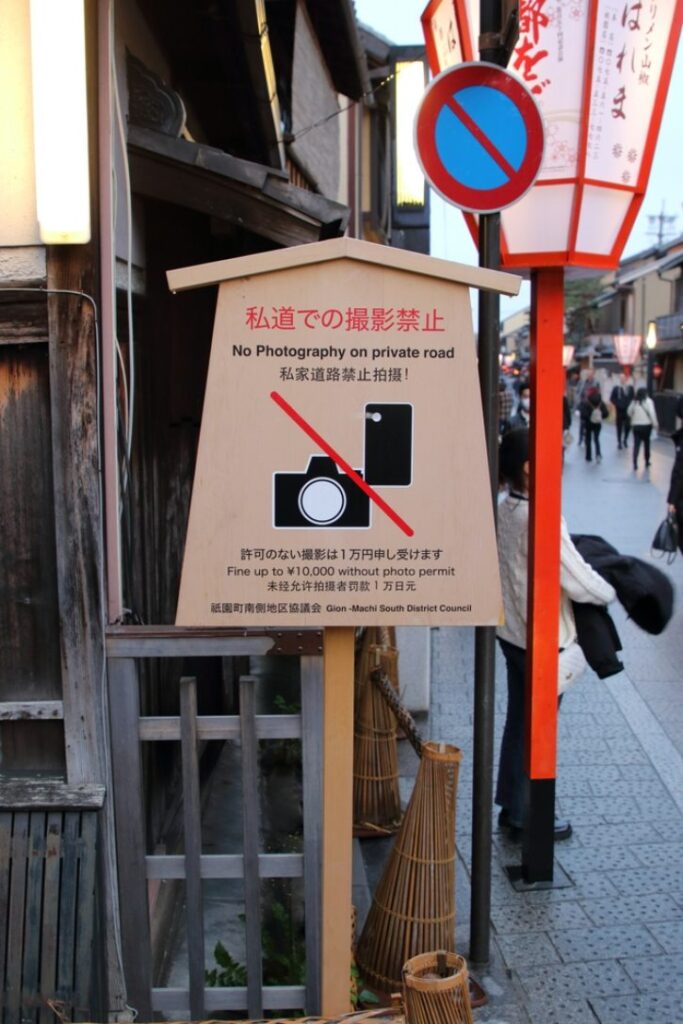
- No Photography on Private Streets: Photos strictly prohibited in private Gion alleys – signs posted in Japanese, English, and Chinese.
- Fines for Violations: If you’re caught taking photos in restricted areas, you could be fined up to ¥10,000.
- Public Areas: Photography is generally allowed in public spaces, but always be considerate of others and avoid obstructing pathways.
- Geisha/Maiko Photos: Must get permission first – no chasing or unauthorized photos.
- Video Surveillance: Some private alleys have cameras to monitor and enforce the rules, so it’s best to follow the guidelines to avoid trouble.
b. Tips for Respectful Photography
- Observe Signage: Pay attention to “no photography” signs and adhere to them.
- Respect Personal Space: Don’t chase geisha/maiko – ask politely for photos and respect refusals.
- Stay on Public Paths: Avoid entering private properties or restricted areas for photos.
- Follow Local Etiquette: In Japan, it’s considered rude to eat while walking or to speak loudly in quiet areas. Keep these customs in mind while exploring Gion.
Read More: 10 Most Beautiful Places to Visit in Kyoto
5. Kyoto Buses Upgrade to New Fare System
a. New Fare Box System: Faster and More Convenient

- Automatic Change Feature: Starting December 1, 2024, Kyoto City buses have introduced a new fare box system. This system automatically calculates your fare and gives you change, so you don’t need to worry about having exact coins ready.
- Faster Processing: Payment now takes only 4 seconds compared to previous 20-30 seconds, significantly improving boarding efficiency.
- All Buses Upgraded: All 810 Kyoto City buses feature this new system.
- Why It’s Helpful: The faster process reduces crowding at the front of the bus, especially during peak tourist hours, and keeps buses running on time.
- Payment Options: Accept both cash (with change given) and IC cards (ICOCA, Suica, PASMO) for convenient payment.
- No More Guesswork: No need to pre-calculate exact change, making the system easier for visitors.
b. Increased Bus Frequency: Less Waiting, More Exploring

- More Buses on Popular Routes: More frequent service on main tourist routes connecting spots like Kinkakuji and Ginkakuji.
- Loop Buses: Buses 201, 203, 205, 206, and 207 now run more often, making it easier to get around the city center.
- Temple Routes: Increased buses from subway stations to major temples.
c. Fare Structure: Simple and Affordable
- Standard Fare: Adults ¥230, children (6-11) ¥120.
- Express Buses: Adults ¥500, children ¥250 for faster direct routes.
- Money-Saving Passes: Subway & Bus 1-Day Pass costs ¥1,100 (adult) and ¥550 (child) for unlimited rides.
- IC Cards: Compatible with ICOCA, Suica for tap-and-go payment.
- Child Discounts: Children under 6 ride free.
d. Tips for Using Kyoto Buses

- Boarding and Exiting: Regular buses – enter back, exit front. Express buses (EX100 and EX101) – board and pay at front.
- Stop Navigation: English and Japanese announcements plus digital displays show upcoming stops.
- Bus Etiquette: Give priority seating to elderly, disabled passengers, and parents with small children.
Read More: 10 Big Changes in Osaka Every Tourist Needs to Know
6. Nintendo Museum Opens – Kyoto’s Latest Attraction
a. What to Expect at the Nintendo Museum
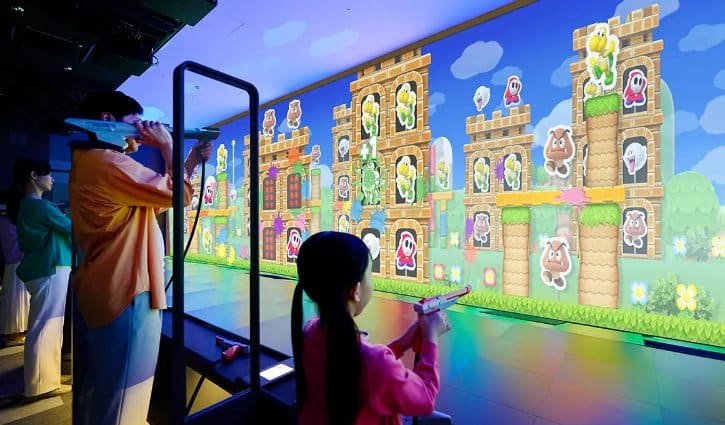
- Interactive Exhibits: Experience classic games with giant controllers, electronic shooting games, and retro consoles (NES, Nintendo 64). You’ll get 10 digital coins with your ticket to use for these activities.
- Historical Displays: Explore Nintendo’s journey from Hanafuda cards to modern consoles. See rare artifacts, game packages, and iconic devices like the Game Boy and Nintendo DS.
- Hands-On Workshops: Create personal Hanafuda cards or learn traditional games (reservation and extra fee required).
- Craft & Play: A unique section where you can connect with Nintendo’s origins by making and playing with your own Hanafuda cards.
- Nostalgic Fun: Relive childhood memories with exhibits featuring Mario, Zelda, Pokémon, and other beloved franchises.
b. How to Get Tickets
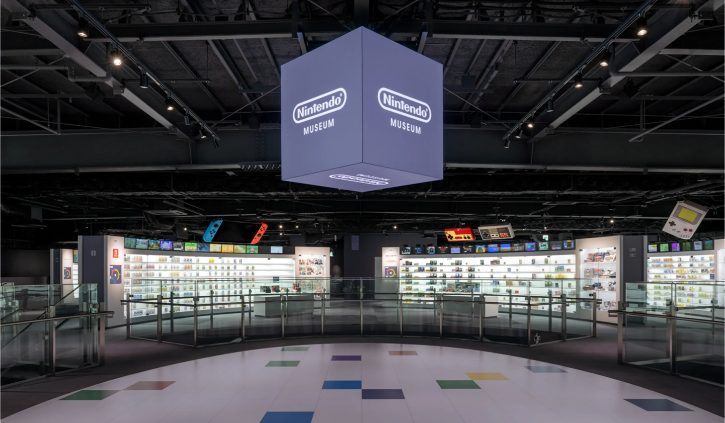
- Lottery System: Enter a random draw through your Nintendo Account, selecting up to three preferred dates and times.
- First-Come, First-Served: If you miss the lottery, check for last-minute tickets released mid-month due to cancellations.
- Ticket Prices: Adults ¥3,300, Teens (12-17) ¥2,200, Kids (6-11) ¥1,100.
- Payment Deadline: If you win the lottery, pay within 7 days to secure your ticket. A QR code will be sent to your email the day before your visit.
- Plan Ahead: Apply early, as popular dates (like weekends) fill up quickly.
c. How to Get to the Museum
- Location: The museum is at 56 Kaguraden, Ogura-cho, Uji-shi, Kyoto, near Ogura Station.
- By Train: Take Kintetsu Kyoto Line or JR Nara Line to Ogura Station, followed by 5-8 minute walk.
d. Tips for First-Time Visitors
- Arrive Early: Opening time is 10 AM – arrive early to maximize your visit.
- Bring ID: You’ll need to show your ID and QR code for entry, so keep them handy.
- Plan Your Coins: Use your 10 digital coins wisely, as you can’t buy more once they’re spent.
- Combine with Kyoto Sights: Consider combining with nearby attractions like Fushimi Inari Shrine or Byodo-in Temple.
7. Kyoto Promotes Lesser-Known Sites

a. Why Visit Lesser-Known Sites in Kyoto
- Crowd Avoidance: While landmarks like Fushimi Inari and Kinkaku-ji are essential first-time visits, lesser-known sites offer peaceful alternatives away from tourist crowds.
- Unique Experiences: Hidden gems like Miyama Thatched-roof Village and Ine Fishing Village provide unique cultural experiences not found in typical guides.
- Seasonal Beauty: Sites like Kifune Shrine and Keihoku offer beautiful seasonal views without the usual tourist congestion.
b. Top Hidden Gems to Explore
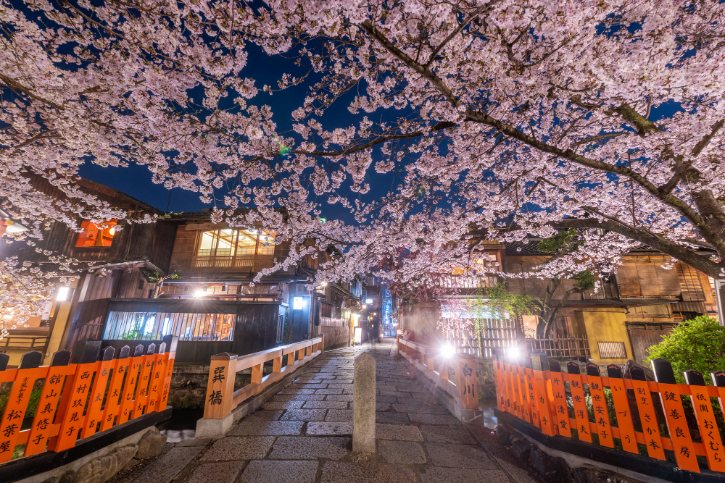
- Shirakawa Minami-dori: A peaceful willow-lined street in Gion, particularly beautiful at dusk when lanterns illuminate the area.
- Amanohashidate Kasamatsu Park: Northern Kyoto Prefecture park offering views of Amanohashidate, one of Japan’s three most scenic views.
- Kimono Forest: An illuminated art installation at Randen Arashiyama Station featuring pillars wrapped in kimono fabrics, best viewed after dark.
- Byodoin Temple: Less crowded UNESCO site in Uji, showcasing the famous Phoenix Hall and peaceful gardens.
- Miyama Thatched-roof Village: A traditional village featuring preserved thatched-roof houses, perfect for experiencing rural Japanese culture.
- Ine Fishing Village: Known as “Japan’s Venice”, featuring traditional boathouses (funaya) with available boat tours.
Read More:
8. NAKED Garden Illumination Lights Up Kyoto Station
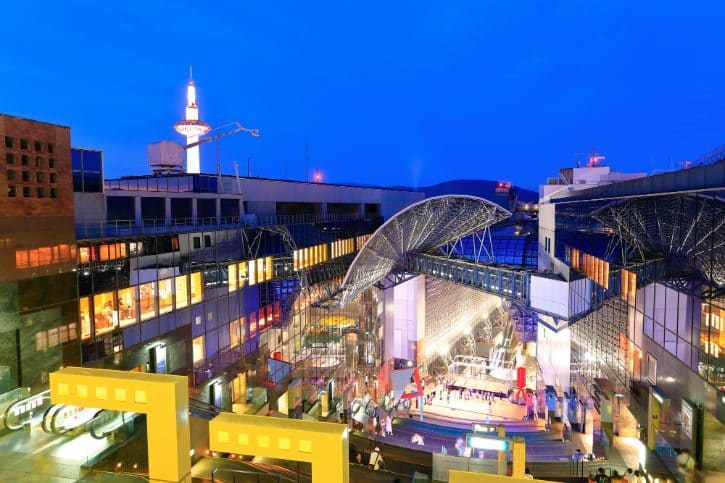
a. Event Details
- Name: Kyoto Station Building East Plaza Light-Up – A Japanese Scroll of Light: Four Seasons of Kyoto Nights.
- Location: Takes place at JR Kyoto Station Building’s East Plaza on the 7th Floor.
- Date: Starting from December 12, 2024.
- Time: Illumination runs from 5:00 PM to 11:00 PM daily.
- Cost: Admission is free from all public viewing areas.
- Online Information: Details available on NAKED GARDEN website.
b. Highlights of the Installation
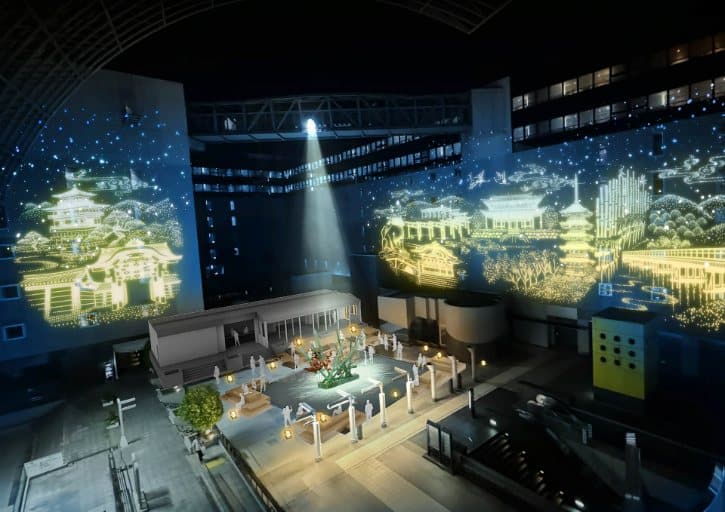
- Seasonal Themes: Features Kyoto’s four seasons through light and sound installations – spring cherry blossoms, summer festivals, autumn leaves, and winter snow scenes.
- Interactive Elements: Some displays respond to visitor movements.
- Projection Mapping: Uses projection mapping to enhance the station’s architectural features.
- Traditional Motifs: Incorporates elements of Kyoto’s cultural heritage.
- Changing Displays: The illuminations evolve throughout the year to reflect seasonal changes.
9. Nozomi Bullet Train Seating Rules Have Changed
a. What’s Changing with Nozomi Shinkansen Seating
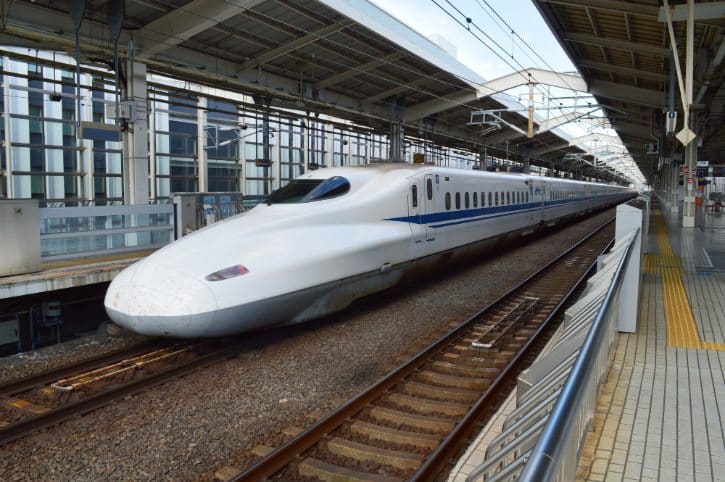
- Reduction in Non-Reserved Seats: From March 2025, Nozomi trains will convert one car (85 seats) from non-reserved to reserved, leaving only two cars (165 seats) for non-reserved seating.
- Current vs. Future Layout: Currently, the Nozomi has 16 cars, with three cars (250 seats) designated for non-reserved seating. After the change, only Cars 1 and 2 will offer non-reserved seats.
- Affected Routes: Changes affect Tokaido and Sanyo Shinkansen lines connecting Tokyo, Kyoto, Osaka, and major cities.
- Nozomi’s Popularity: Nozomi remains the fastest Shinkansen option with fewer stops than Hikari and Kodama trains.
- Peak Periods: All Nozomi seats require reservations during peak seasons (New Year, Golden Week, Obon).
b. Why Are These Changes Happening
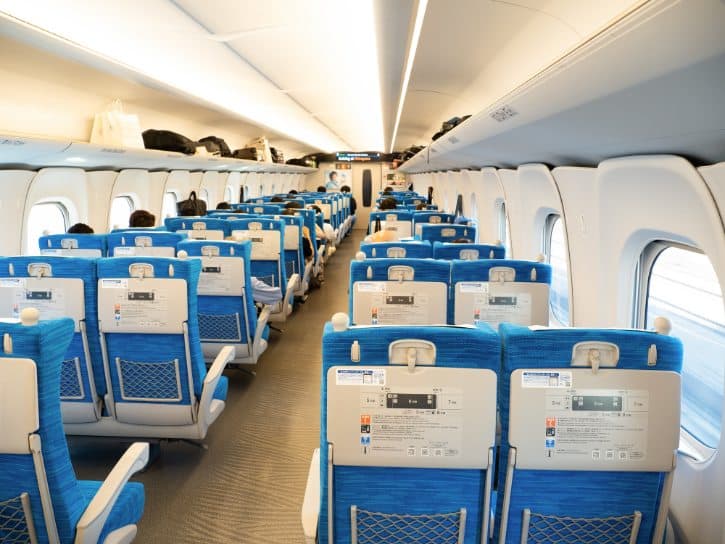
- Overcrowding Concerns: Addresses overcrowding issues and platform safety during peak times.
- Online Reservations: Reflects increased popularity of online seat reservations.
- Efficiency and Comfort: Aims to improve passenger comfort and operational efficiency on busy routes.
- Minimal Price Impact: Small price difference between non-reserved (¥13,320) and reserved seats (¥13,970) for Tokyo-Kyoto route.
c. How Does This Affect Your Trip to Kyoto
- Seating Options: Non-reserved seats offer flexibility but may be harder to secure; reserved seats guarantee spots but require specific train times.
- Reserved Seat Benefits: Reserved seats guarantee you a spot, but you’ll need to stick to a specific train. This is less flexible if your plans change, like if you want to spend more time exploring Kyoto’s temples.
- Peak Travel Seasons: During peak travel seasons (like New Year or Golden Week), all Nozomi seats will be reserved, so you’ll need to book ahead to secure a seat.
- JR Pass Usage: Nozomi trains require additional fees with Japan Rail Pass – consider Hikari or Kodama alternatives.
- First-Time Visitor Tip: For first-time visitors, booking a reserved seat is recommended, especially if you’re traveling with luggage or during busy periods.
d. Tips for Booking Your Shinkansen Tickets
- Booking Platforms: Reserve through Smart-EX or Klook for advance bookings.
- Peak Season Strategy: Book early during busy periods to ensure seat availability.
- Non-Reserved Seating: Arrive early to secure spots in Cars 1 and 2.
- Backup Options: Use non-reserved cars or switch to Hikari/Kodama trains if missing reserved train.
Read More: 10 New Shinkansen Changes Visitors Should Know
10. New Rules for Tax-Free Shopping in Japan
a. How the New Tax-Free System Works
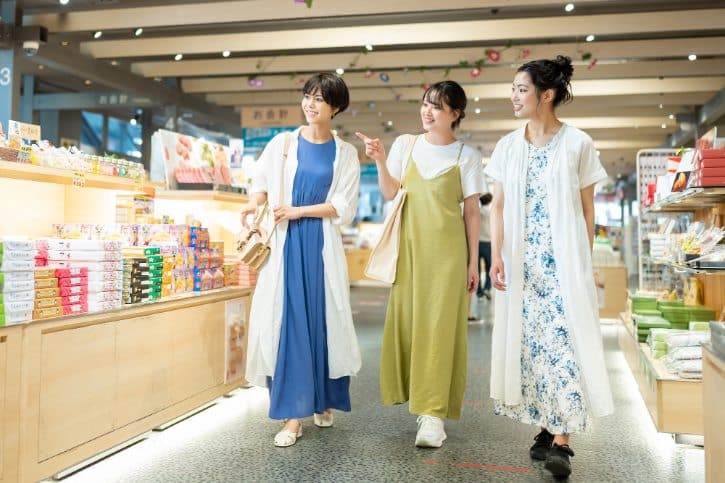
- New Payment Process: From 2026, pay full price (including 10% tax) at stores and claim refunds at airport after customs verification.
- Refund Methods: Get refunds in cash or via pre-registered credit card, similar to European systems.
- Keep Your Receipts: Make sure to save all receipts for eligible purchases. You’ll need them to claim your refund at the airport.
- No Immediate Tax Deduction: Unlike current system, no immediate tax deductions at stores – plan for airport refund time.
b. What’s Changing for Shoppers
- No More Spending Limits: The current ¥500,000 cap on tax-free consumables (like cosmetics and food) will be removed. You can now shop without worrying about hitting a limit.
- Simplified Packaging Rules: No more special sealed bags required for consumables.
- No Minimum Purchase: Possible removal of ¥5,000 minimum purchase requirement per store.
- Extended Refund Window: You’ll have up to 90 days after purchase to claim your refund, giving you more flexibility.
c. Why the Changes Are Happening
- Preventing Fraud: New system prevents resale of tax-free items within Japan.
- Streamlining the Process: The changes aim to make tax-free shopping more efficient for both tourists and retailers, reducing paperwork and delays.
- Encouraging Fairness: The updates ensure that tax exemptions are only for genuine tourists, not those looking to profit from reselling.
d. Tips for Shopping in Kyoto
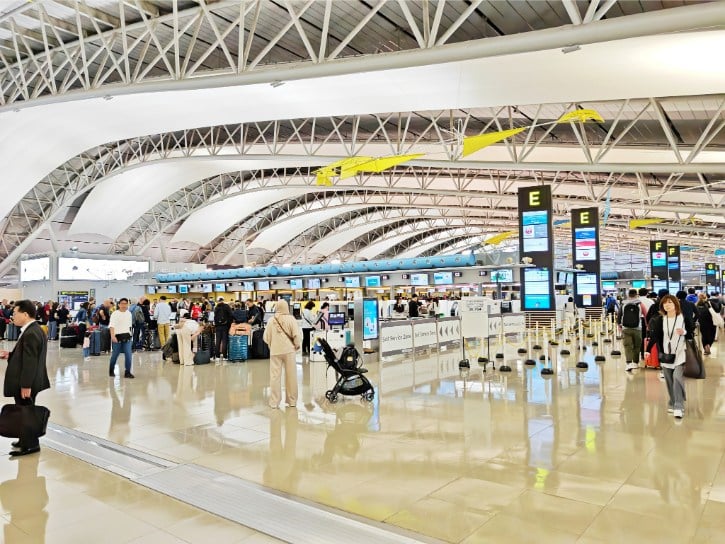
- Plan for Airport Time: Allow extra time at Kansai International Airport for refund processing.
- Keep Track of Receipts: Use a dedicated envelope or folder to store all your receipts. This will make the refund process smoother.
e. What to Expect at the Airport
- Customs Inspection: Show purchases and receipts at customs before refund.
- Refund Counters: Look for tax refund counters at the airport. These are usually located near the departure gates.
- Cash or Card Refunds: Choose between getting your refund in cash (yen) or having it credited to your card. Cash is instant, while card refunds may take a few days.
- Pack Smart: Keep your tax-free items easily accessible in your carry-on luggage. Customs may need to inspect them before you check in.
Related Posts
Photo Credit:
Photos by PIXTA

